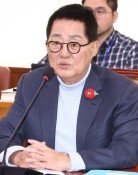[Opinion] Administrative District Reform
[Opinion] Administrative District Reform
Posted November. 04, 2008 09:27,
King Seongjong of the Goryeo Dynasty introduced the province as an administrative unit in the year 995. He divided the nation into 10 provinces and assigned a head to each province. Province, or do in Korean, was an extension of bu in the ancient Goguryeo Dynasty, bang of the Baekje Dynasty and ju of the Shilla Dynasty. In 1413, King Taejong of the Joseon Dynasty divided the nation into eight provinces whose names are still in use in todays Korea. The system dividing the capital and its surrounding areas plus 13 provinces was changed into one special municipality plus nine provinces in 1949. In 1995, the system added five metropolitan cities under the local autonomy era. 2006 saw the introduction of Jeju Special Self-governing Province. Korea now has one special municipality, six metropolitan cities, eight provinces and one self-governing province.
When transportation and communication technology were undeveloped, geographical features such as mountains, rivers and valleys formed the boundaries and centers of provinces and administrative districts such as municipalities. Each district had its own culture, identity and even dialect, which combined to create unique regional sentiment. When an extensive transportation network spanning roads and railways were built to link all corners of the nation and the Web brought down boundaries between districts, strong calls were made for a dramatic reform of the administrative district division for more efficient land use and administrative work, and to strengthen the competitiveness of rural areas.
Although the 17th National Assembly discussed the reform, it made little progress. Picking up the slack, President Lee Myung-bak included the matter among his top 100 national agenda items. On Sept. 25, he and main opposition Democratic Party leader Chung Sye-kyun agreed to push ahead with the reform, to the dismay of many municipal and provincial heads nationwide, who are generally against the reform. Politicians and experts are in favor but have different ideas about the methodology. Some want to abolish the metropolitan city system while others seek the consolidation of cities, counties and wards. The minor conservative Liberty Forward Party is suggesting a federation pursuing a small but strong nation by reorganizing the nation into five to seven large districts.
Ruling Grand National Party lawmaker Kwon Kyung-seok, a secretary of the National Assemblys Government Administration and Safety Committee, yesterday submitted an administrative district reform bill to consolidate 230 cities, counties and wards into 50 to 60 while maintaining the current municipality system. Party Chairman Park Hee-tae, however, made it clear that the bill was Kwons own and not the result of a consultation with the party. Administrative district reform can bring enormous change not only to the interests of each provincial government, but also to the lives of the people. It should be accompanied by a constitutional amendment if necessary. Change will have to come when it has to, but does the need for administrative district reform trump the urgency of the economic crisis? The government should reconsider its priorities.
Editorial Writer Kwon Sun-taek (maypole@donga.com)







